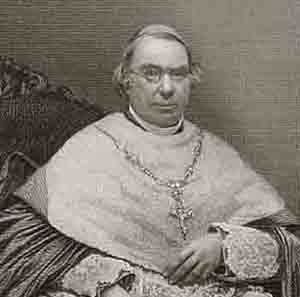Night might be more symbolic/metaphorical given it certainly was like night while Our Lord was in the tomb.
Cardinal Wiseman agrees with you, as quoted by Dr. Carol Byrne in this excerpt:
“A benighted reform The most popular argument put forward by the reformers in favor of changing the Easter Vigil was the alleged illogical character of lighting the Easter fire and candle in daylight hours. How absurd, they scoffed, to be singing about the darkness of “this night” in broad daylight – as if the Church had committed a liturgical gaffe that had gone unnoticed for 13 centuries.
And so the reformers sneered and sniggered at the age-old Easter Vigil, led on by the instigator of the Liturgical Movement, Dom Beauduin, who stated scathingly in 1951:
“How is it that we have endured and accepted uncritically for centuries the practice of singing the Exsultet and the Vere beata Nox (“O truly blessed night”) in broad daylight? And how many other equally serious anomalies we now accept without batting an eyelid! Surely this must lead us to conclude that our liturgical consciousness is not sufficiently enlightened?” (4) (See
here)
It was an astoundingly arrogant view that assumed that all his predecessors in the priesthood were either oppressed by tyrannical Church leaders or were too dim-witted to think for themselves and, furthermore, that there was only one way to think – his way. It was also a view that came to dominate and distort the thinking of theologians and liturgists up to our times. (5)
But it was Beauduin and his fellow-reformers, not the followers of Tradition, who were the benighted ones. The central fallacy in Beauduin’s argument, which was enshrined in Maxima Redemptionis, was that midnight, or at least sundown, was the “proper” time to hold the Easter Vigil. (6)
 Cardinal Wiseman justified the traditional Easter vigil ceremonies
Cardinal Wiseman justified the traditional Easter vigil ceremoniesHaving claimed to be following the superior path of enlightenment over the Church’s lex orandi, Beauduin failed to see what was glaringly obvious to well instructed Catholics: that the references to the “night” in the traditional Easter Vigil had a mystical rather than a naturalistic significance.
Let us listen to the following explanation of this point given by a Prelate who had never been indoctrinated in the Liturgical Movement’s ideology. With reference to the Easter Vigil, Cardinal Nicholas Wiseman (1802-1865), the first Archbishop of Westminster, stated: “The service speaks of the ‘night;’ it is the night in which Israel escaped from Egypt, and which preceded the resurrection of Christ.” (7)
In other words, “night” was used in the Vigil texts in a pre-figurative sense, (8) as a metaphor for the darkness of the world in the bondage of sin before the Redemption. It has no intrinsic connection with the time when the sun sinks below the horizon.”https://www.traditioninaction.org/HotTopics/f092_Dialogue_16.htm